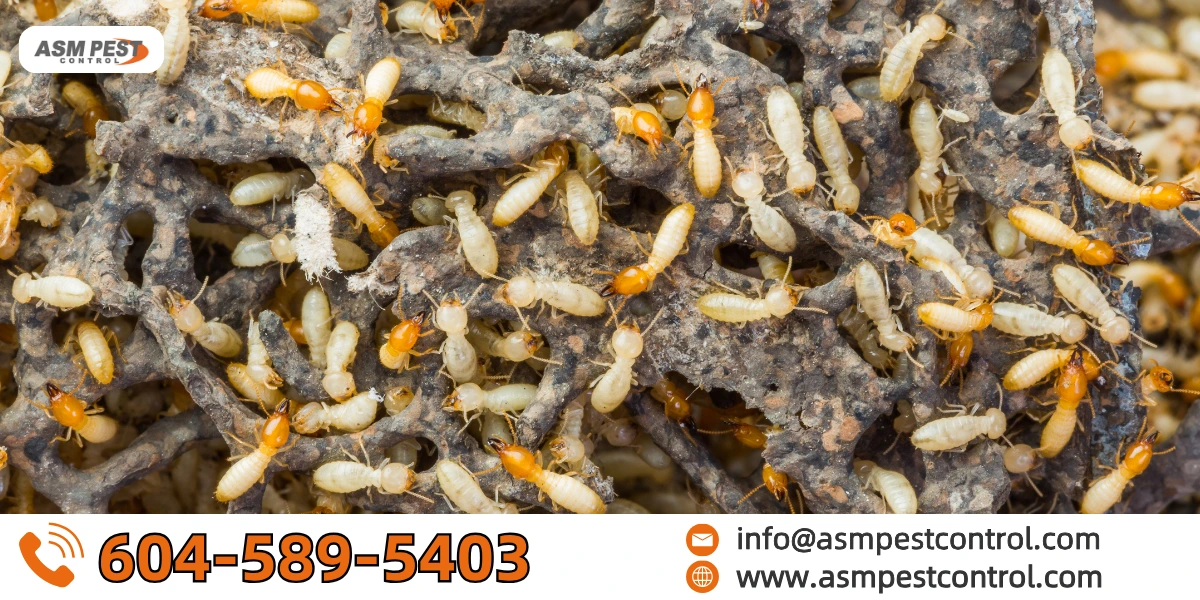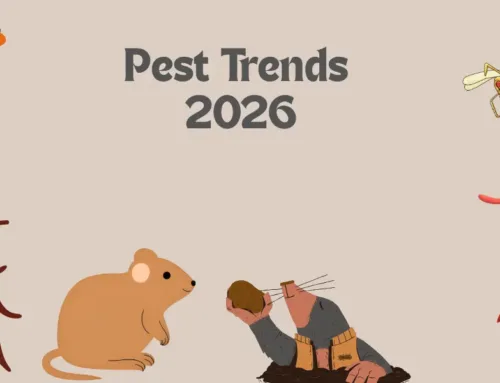When somebody mentions white ants, an image of a white-skinned ant of the kind you see every day will come to your mind. But the fact is more terrifying: the white ants are called termites, which is one of the most prevailing household insects that ever existed. Knowing what white ants look like, how to identify early warning signs, and how to prevent them from entering your home can save you thousands in repairs.
In this blog, we’ll explore what white ants look like, how to spot them before they do serious damage, and how to protect your property from a termite infestation.
Are White Ants Really Ants?
White ants are not ants, as they are referred to. They are termites, which are different insect species. They are mistaken to be ants due to the sharing of some of their visual characteristics with the ants, like the fact that they are tiny and move together as colonies.
Termites are however far more harmful. Although ants may disrupt the peace of your house, termites will consume your house as they feed on cellulose substances and wood. If you’re unsure whether it’s ants or termites, reach out for expert advice or explore our trusted ant control Vancouver service.
What Do White Ants Look Like? Key Physical Characteristics
White ants can look like pale or transparent ants to the naked eye. However, when you look at them more carefully, they show unique characteristics rather different..
1. Body Shape
Termites are straight-bodied, unlike ants, which have bodily portions that are segmented with a narrow waist. It has no midsection nipped waist.
2. Coloration
The majority of white ants are creamy white to light brown in color. They all may be translucent, particularly the worker termites, which comprise the largest part of a colony.
3. Antennae
Although ants possess elbowed antennae, termites possess straight, beaded ones; hence, it gives you an easy identification between the two.
4. Wings (Swarmers)
Reproductive termites (alates), which are termite swarmers, possess two pairs of identical length wings that protrude out of their bodies. Discarded termite wings around the windows or in the door frame indicate a termite colony.
Different Types of White Ants
Understanding termite castes is key to identifying them:
- Workers: pale, weak-bodied, wingless. They cause the damage by biting into the wood.
- Soldiers: Barely bigger and with bigger mandibles used to defend.
- Alates (Swarmers): They are the flying termites, and they come out to form new colonies.
All the castes look slightly different, yet all of them fit the general appearance of a white ant.
How to Know If You Have a White Ant Infestation
Some of the early warning indicators to watch out for:
1. Mud Tubes
Subterranean termites can construct pencil-like mud tubes that extend along wall surfaces, foundation as well and crawlspaces to move between their colony and food source, and are kept moist and concealed.
2. Termite Droppings (Frass)
Frass is small, solid, pellet-like termite waste produced by drywood termites. They tend to cluster around infected wood, and they look like sawdust.
3. Hollow-Sounding Wood
If your wooden structures sound hollow when tapped, termites have likely eaten the interior, leaving a thin outer shell.
4. Discarded Wings
The discovery of mounds of termite wings inside is an indication that a colony must have swarmed.
5. Sagging or Damaged Wood
Once the wood is gnawed by the termites, it becomes weak and distorted, and structural problems such as sagging floors and loose tiles are usual.
Why It’s Crucial to Identify White Ants Early
Unlike common ant control coquitlam, white ants never stop eating. Their insatiable appetite can compromise your home’s foundation, flooring, and walls. At a very early stage, it looks like a small problem that can lead to tens of thousands of dollars in structural damage.
Early detection and treatment are critical. Ignoring the signs allows them to multiply and expand their colony, making eradication more difficult and expensive.
How to Prevent White Ants from Invading Your Home
Here are some steps you can take to keep white ants away:
1. Fix Moisture Problems
They thrive in humid conditions. Fix leaky pipes, gutters, and AC condensation lines that may create moisture buildup.
2. Seal Cracks and Entry Points
Seal gaps in your foundation, roof, and walls. White ants can enter through openings as small as 1/32 inch.
3. Store Wood Away from Your Home
Keep firewood, lumber, and mulch at least 20 feet from your house, and off the ground if possible.
4. Install Termite Barriers
Consider physical or chemical termite barriers for your property, especially if you live in an area prone to infestations.
5. Regular Inspections
An annual inspection by a licensed pest control expert can catch infestations early and protect your investment.
Frequently Asked Questions (FAQs)
1. Are white ants and termites the same thing?
Yes. White ants are another name for termites. Despite the misleading nickname, they’re not ants at all.
2. Can termites fly?
Some termites, specifically alates or swarmers, have wings and can fly short distances to start new colonies. They usually appear during spring or summer.
3. How do I know if termites are in my walls?
Look for mud tubes, hollow sounds in wooden walls, or tiny holes and droppings.
Final Thoughts
Knowing what white ants look like is your first defense in protecting your home. Their subtle presence can go unnoticed for years, quietly eating away at your structure. But by learning the signs, taking preventive steps, and acting quickly, you can avoid the nightmare of a full-blown termite infestation.
If you’ve spotted any warning signs or suspect white ants in or around your home, schedule a professional termite inspection immediately. It’s better to be proactive than face extensive repairs down the road.






